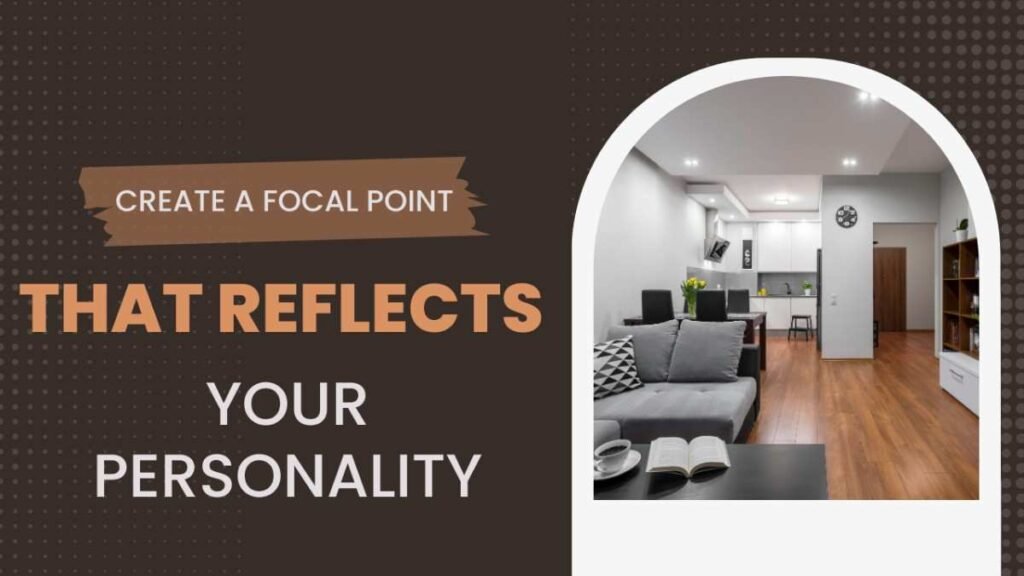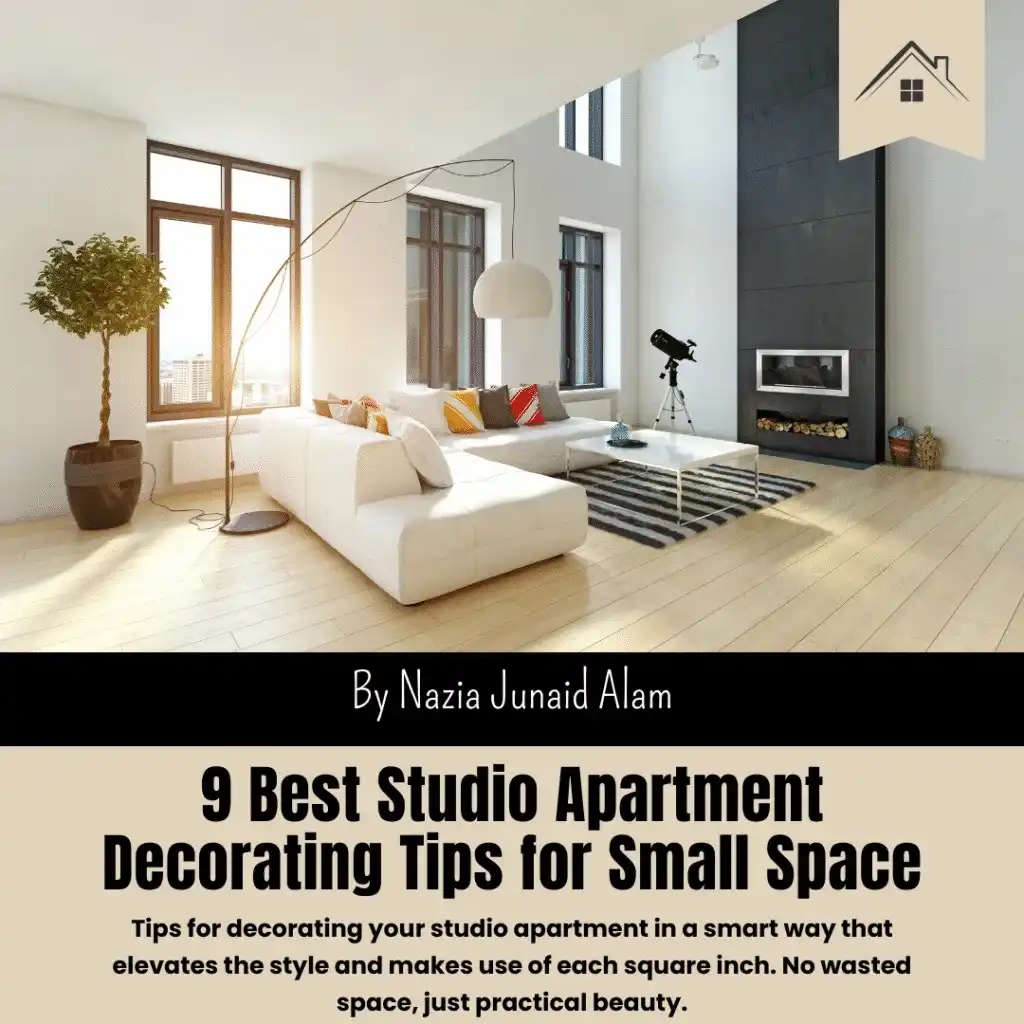Studio apartments can be extremely chic if planned with care. It’s not about the space, but the way you utilize the space. From hidden storage to vertical layers, designing the studio requires smart solutions, minimalist aesthetics, and personal character. The studio isn’t only an area; it’s an example of smart living and the most thoughtful style. If you take the proper approach, every inch could feel footprint and inviting. The aim is to ensure that every square inch counts and keep it looking stunning as well as comfortable. It’s feasible to create a style that is both stylish and useful.
Optimize Every Square Inch with Multifunctional Furniture
If you’re designing a small apartment, each piece of furniture has to fulfill more than one purpose. Multifunctional furniture like Murphy beds, sofa beds, and ottomans with hidden storage isn’t only useful, it’s crucial. They allow your studio apartment layout to adapt during the day and transform into a living room, bedroom, or workspace seamlessly.
Think about the possibility of a lift-top coffee table with a top that can be transformed into the perfect desk space or dining room. The bench in front of the door is a great place to store bags or shoes. The modular sofa could be used as a bed for guests in case they need it. It doesn’t have to mean sacrifice in comfort. It’s about reimagining the space. There are even seating options equipped with compartments built in, and your headboard could include shelves with an open design.
A desk that folds into the wall or a kitchen island with drawers can bring both function and form to cramped spaces. The coffee table could conceal board games, linens, or other dining items. The more adaptable your furniture is, the more useful your living space will be. Make sure to choose furniture that has clean lines, with subtle accents to improve flow and minimize visually heavy items.
Zone with Style: Rugs, Screens, and Sliding Doors
Within a studio, the concept of creating zones creates a sense of an atmosphere of comfort. Area rugs for diverse functions like eating, sleeping, or just relaxing. A folding screen, curtain, or an IKEA bookcase could create a division without the need to build walls. Visual markers can help establish the psychological boundaries between different spaces and give every “room” a sense of belonging.
The sliding doors, specifically the frosted glass and wood panels, make the perfect choice to visually divide space, while permitting light to flow through. Don’t underestimate windowsills either. They are a great way to create soft barriers or as a platform for plants, books, or even ambient lighting. Choose different ceiling heights and pendant lighting, as well as paint color, to create further distinct zones. Zones that are smartly designed enhance both function as well as design, giving the studio an affluent, well-curated appearance.
Let the Light In: Maximize Natural Light and Reflective Surfaces
The lighting can transform a space in a Small studio, it’s not a problem. Natural light creates depth. Use sheer curtains or avoid curtains altogether. Install mirrors in the windows opposite to let sunlight shine through and let the space breathe. The bright space naturally feels larger and more positive.
Create layered lighting by using the use of floor lamps, wall-mounted sconces as well and under-cabinet LEDs. Beware of overhead lighting that could seem harsh or sluggish. Choose warm lighting that resembles sunlight, bringing warmth and coziness. You can hang light pendants in designated areas such as your dining room or desk.
Create a mirrored closet or backsplash that is mirrored in the kitchen for more reflection. Even glossy surfaces such as glass or lacquered tables reflect light. What do you want to achieve? Design light zones to highlight the different spaces while also allowing for openness.
Keep It Cohesive: Stick to a Clear Color and Texture Palette
A consistent space feels deliberate. Stay with your aesthetic ideas using colors that are limited. Think neutrals, earth tones, or even bold Scandinavian minimalism design. Create contrast with texture using pillows, leather chairs, exposed brick, and a woven rug. A painted accent wall could create harmony as long as all the other furniture is in the same color family hues.
Include accents to unify the room, like brass drawer pulls, midcentury modern table legs from the mid-century, or a wood-toned common theme used in cabinetry and shelves. The visual continuity tricks the eyes into seeing a bigger area that is more cohesive. Make use of color repetitions for art, pillows, vases, as well as small items for a cohesive look.
It is important to ensure that all materials are soft and warm. This helps to balance minimalism and comfort. When the space feels connected with texture and color, small spaces can become unforgettable.
Maximize Vertical Space in Studio Apartment
Floor space is finite. However, what about your walls? The walls are where you can breathe design. Put floating shelves on the wall and hang artwork, or even a pegboard over your desk. On top of your bookcase or even the windowsill could serve as a home for flowers, baskets, or even lamps.
Consider using levels of thought: Use tall bookcases, modular shelving, and wall-mounted storage baskets for organizing your daily necessities. Hang coats with hooks, keys, bags, and other things that occupy the floor. Place your TV in a stand or on a fold-down desk to preserve valuable square footage. Put up vertical shoe racks or spice holders that are upwards, not down.
The space that is behind your front door or over the mattress can be used for. You could consider a gallery wall, which is stretched upwards, or rods for curtain installation close to the ceiling to make the eye look up. These tricks don’t only reduce space; they add an illusion of height and depth.

Create a Focal Point That Reflects Your Personality
Your space doesn’t need to look stale or ad hoc. Select a distinctive feature such as a design, an art piece, a designer chair, or a statement wallpaper for your bed. The focal point is the focal point of emotion in the space. This is where the eyes are and the place where style shines.
Customized accents like galleries, gallery walls, Moroccan poufs, or vintage finds at the downtown Los Angeles flea markets tell the story of your home. It could be a whimsical vignette from a trip and a cookbook shelf or even a corner for reading featuring soft lighting and the most loved fabrics. The space you choose should be well-curated and not ad hoc.
Consider your interests as the basis for your style, whether it’s traveling and books, fashion, or the natural world. An accent piece can shift as well; change artwork throughout the year or change your decorations based on mood or the time of the year.
Use Built-in and Hidden Storage Smartly
Storage does not have to shout to be noticed. Use under-bed drawers or a coffee table with baskets or a kitchenette with concealed cabinets. Each nook is more concealable than it appears. Make sure you have dead spaces: beneath the stairs, on the back doors, or even inside the seats.
The pull-out bins that are loft beds, baskets placed above your wardrobe, or even trays in your windowsill all aid. Put hooks on the doors of your closet to hold belts, scarves, or other items. Place suitcases with clothes that aren’t in season in the interior. Consider yourself a minimalist, but keep it organized as a maximalist.
The objective: to create space for all things, with no visual obstructions. When you have fewer things on the floor, your space can breathe more easily. Hidden storage is an artful trick to make a space feel more spacious.
Small Budget, Big Style: Budget-Friendly Decor Moves
Decorating on a tight budget shouldn’t necessarily mean you have to compromise. Make use of peel-and-stick wallpaper and removable hooks, and IKEA hacks to make your space unique with no permanent modifications. Just a few pots, curated books, and vintage finds can transform even a 190-square-foot studio into a chic retreat.
Find the best deals. Make DIY shelving, arrange thrifted furniture, and then make sure to decorate your space with care. Pay attention to the small details important to you, like texture harmony and ambience. Visit flea markets or online classifieds and upcycle pieces you have already got by applying a fresh coat of paint.
Simple items such as a ceramic mug, woven baskets, or even framed postcards are a great way to add a touch of class. If you have the right ideas and creativity, small budgets can result in one of the finest, unique areas available.
What are the disadvantages of a studio apartment?
Although studios are designed to promote minimalist lifestyles, they could make it difficult to maintain privacy, storage, and your comfort level. A spacious layout can limit the sound level, and if you don’t have careful planning, clutter can become easily visible. It can be difficult to host guests or to separate areas of work and rest.
They’re not a problem, but they require inventive ways to solve them. Rugs are a great way to soften sound, curtain panels to create the flexibility of divisions, and intelligent lighting options to alter the ambiance. Utilizing multifunctional furniture, well-defined zoning systems, as well as the right design, you are able to bypass these limitations and transform the space into a design opportunity. What will you get? The feeling of a space personalized to you that’s larger than it is.
Quick List: Must-Have Decor Tips for Studio Apartments
- Pick furniture with hidden storage.
- Rugs are a great way to define a zone.
- Use maximum natural light.
- At Multiple levels, use Layer lighting.
- Use of wall hooks, shelves, or even pegboards.
- Choose a Limited color and texture palette.
- Create a central location.
- Use books and plants to look more inviting.
- Utilize renter-friendly material
- Maintain the floor space free.
- To create height, hang curtains high.
- Make sure clutter is out of view using bins and traytrays
- Use lightweight furniture to make the room space airy.
FAQs
How to organize a studio apartment?
Use zoning to store vertically as well as multi-use furniture.
How do I feng shui my studio apartment?
Make sure it is clear of clutter, let light in, and clearly define your bedroom area.
How to compartmentalize a studio apartment?
Rugs, screens, shelves, or curtains for visually separating spaces.
How to make a studio apartment less stuffy?
Make sure you have enough airflow. Use mirrors and keep the decor minimalist.
How to be happy in a studio apartment?
Make it your own, flexible, and calm visually with natural elements.
What’s the best layout for a studio apartment?
Open plan, with distinct functional zones as well as compact mobile furniture.
Conclusion
Studio apartments that are well-designed and designed isn’t just about creating space. It’s about bringing the perfect balance, design, and reflecting your personality. Each square inch counts, and every object must have a purpose; each design element ought to be purposeful. You may be attracted to New York lofts, Scandinavian minimalism, or even cozy boutique hotel style; the small spaces will appear larger when you take the proper strategy.
It is important to prioritize functionality without sacrificing warmth. Make zones with no walls. Decorate with minimal clutter. By arranging your furniture with care, coordinating colors, and adding a personal touch, your space will be much more than just livable. It’s enjoyable. It doesn’t require a huge house to feel comfortable; all you need is an intelligent space that functions perfectly for you.
Ready to Transform Your Studio?
Need help designing your dream studio or apartment layout? Check out redfinz.com for expert design and space-planning options designed specifically for modern living.






